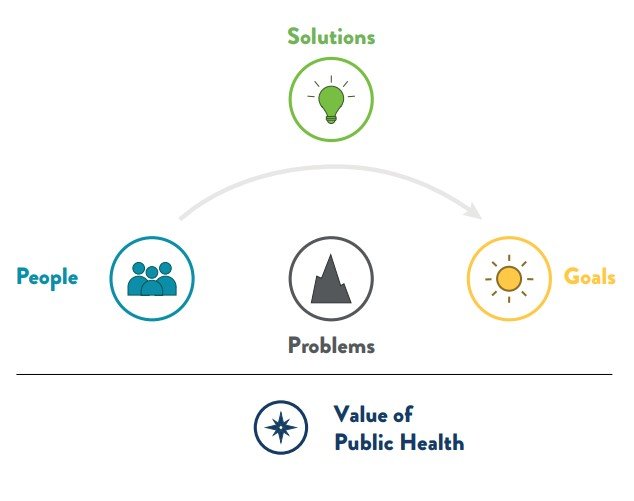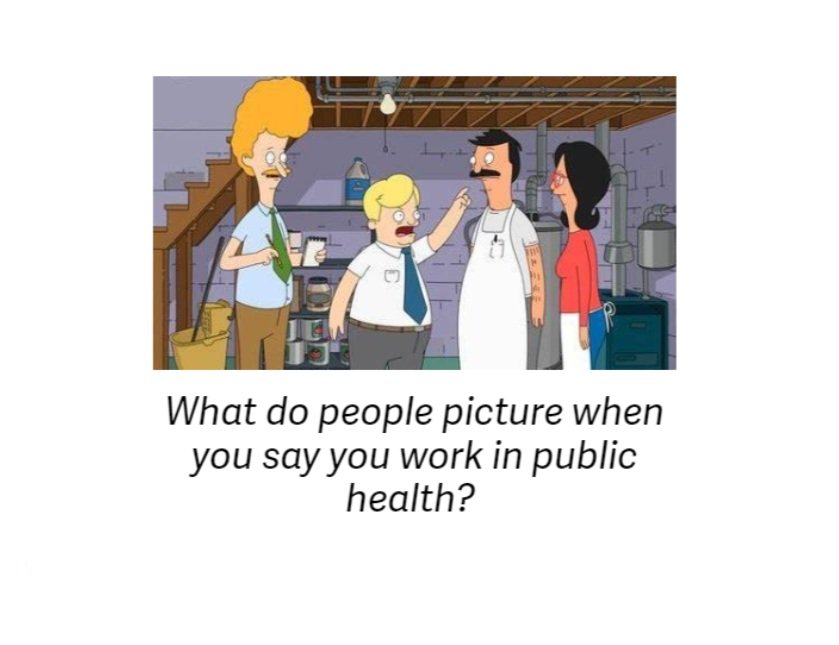Search for specific blog posts by key words, authors, or FPHR capabilities:
Capability or Author
- Accountability & Performance Management
- Anne Graves
- Assessment & Surveillance
- Communications
- Community Partnership Development
- Emergency Preparedness & Response
- Equity
- Erika Guenther
- Jenna Olson
- Mary Parsatoon
- Michelle Stronach
- Organizational Competencies
- Policy Development & Support
- Spoorthy Uddurhally
- Stephany Medina
- Susan Michels

Bridging Perception Gaps
A recent assessment of public health communications in rural Minnesota found four perception gaps that complicate the way communities understand, relate to, and trust the work we do as public health practitioners. Recognizing these gaps is the first step to bridging them.

The E Word
Many of us are rethinking how we talk about key public health values. But you know what? Some of the words we often reach for—including equity—were never landing the way we hoped. So, what if we meet this moment with a fresh commitment to saying what we really mean? Check out these evidence-based strategies that are rooted in public health values, connect with more people, and move the conversation forward.

DIY or delegate? Plan your message and call in help when you need it.
Communicating clearly, creatively, and consistently with the communities we serve is essential. And bringing in outside experts can amplify messages and boost capacity. Whether you’re looking to flex your own creative, design, and project coordination talents or you’re ready to hand it over to the experts, start with a plan and ask the right questions.

Bike helmet or grizzly bear?
One cultural mindset that’s getting a lot of play right now? The idea that “natural” is better than “artificial.” And you know what? We don’t have to fight it. We can use that mindset to talk about public health values. But framing it as a choice between extremes won’t spark productive thinking. Read on to find out what will.

Building Trust Before the Storm: Reflections on Crisis and Emergency Risk Communication Training (CERC)
Building trust and credibility over time—through things like regular engagement with local media, growing our social media presence, and forging partnerships across sectors—lays the groundwork to communicate well, and do it quickly, when it matters most.

Talking Data, Equity, or Partnerships? Start with Values.
Do you have data you want to tell people about? Are health equity topics heavy on your mind, and you want others to understand? Are you working to develop a partnership? Here’s one thing you can do to help your words land in the way you intend.
Know what values the people you’re trying to reach have in common with you, as a public health professional. Name those values. Say them loud, proud, and first. When you take a moment to connect in this way, others may be more ready to hear your data, talk about equity, and take action together.

Shifting Mindsets: Health Individualism and Systemic Understanding
Health individualism can lead to blame and stigma, because it makes it easy to assume that disparities are the result of groups of people making the same bad choices.
Take a guess. Since 2020, has the prevalence of health individualism increased, deceased, or stayed the same across the American public?
Read on for the answer, and to find out what steps you can take to advance a systemic understanding of health.

Quick Tips for Impactful Presentations
Whether you’re presenting to your colleagues, a group of students or community members, or at a conference, things like how your information is organized, your pace, and whether you ask questions can all make a big difference in what they’ll take away. Check out these two principles and five elements that can turn your audience from glazed to engaged!

A Guide for Public Health Storytelling
Use this framework to tell a story about the impact and potential of your work. It can help recruit champions—from colleagues and partners to community leaders and policy makers—who could help remove barriers and solve problems that get in the way. There is a 1-minute message included in the toolkit that you can use verbatim, but it’s most useful as a guide for creating your own 1-minute messages about work that matters in your community.

Imagine this.
It’s your neighbor’s annual barbeque. You show up with a dish of your grandmother’s ambrosia salad, squeeze it onto the table between the brat buns and sweet corn salsa, and load up your plate. There are some new faces at the picnic table—this must be the family that just moved in across the street. You sit down, make introductions, and then comes the question: “What do you do for work?”